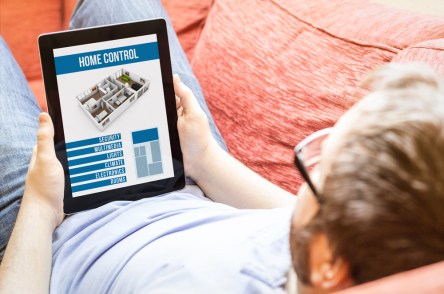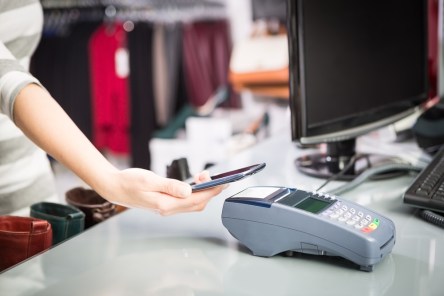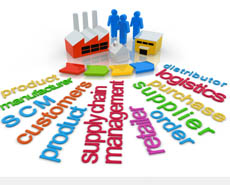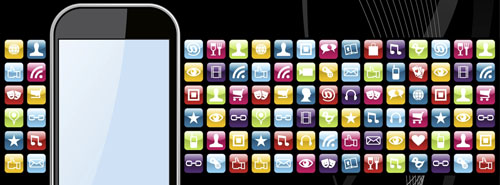Voice search is growing at an incredible pace. As we write content, we need to adapt to its unique format and language. Search Engine Land reports that voice search has risen significantly in the past year. Nearly 42 percent of users adopted voice search in the last six months alone. During our recent Open Café session, the State of Search Marketing, we polled 100 users from across the U.S. to learn how they interacted with voice search. This is what we learned: 10 percent of people surveyed use voice search all of the time 30 percent of respondents occasionally use voice search 35 percent of respondents rarely use voice search Voice search appeals to about 75 percent of respondents, and that number continues to grow. When you consider that the average renter will view 20 properties online, but will only visit three in person, it is vital that your property appears at the top of their voice search results. Take a second look at your content through the lens of voice search. There are two key components that differentiate voice search from text search. The first is more descriptive, longer-tail keywords and the second is question-based search phrases. Greater Description with Keyword In a text search, users adapt to computer language. Short phrases such as “apartments cabbagetown atlanta” or “dates YASC DC 2016” offer just enough info to connect users with general information. With voice search, users speak to their personal assistant as they would a friend, using full-length and often complex sentences. “Siri, find one-bedroom apartments for rent near a MARTA station in Cabbagetown” or “Okay, Google: find the dates for YASC in Washington, D.C. this year.” With this in mind, write content that reflects how people speak to one another. You can...
Embracing Tech
Attract + Retain Residents
Renters of all ages have rising expectations for technology features in their rentals. While splurging on gadgets would certainly catch your prospects’ attention, that approach isn’t the most budget-friendly. You’ll want features that offer the biggest bang for your buck! We’ve evaluated a few tech toys that combine resident appeal, utility, and longevity. USB Compatible Outlets These little guys allow residents to charge phones, tablets, and other mobile devices without displacing lamps and small appliances. Installing USB compatible outlets can offer significant savings for older properties, which often lack the quantity of outlets available in newer properties. Residents will need fewer extension cords and power strips, which reduces the risk of hazardous overloads and costly fires. USB outlets are affordably priced and can be installed in less than ten minutes. With so many USB-reliant devices, they are unlikely to become outdated soon, making them a terrific investment. Home Automation Home automation wins over the hearts of many: tech gurus love controlling their homes from their tablets; those who love to save savor the $180 savings per year thanks to a remotely programmable thermostat; tenants who enjoy convenience appreciate starting the coffee maker from bed or turning off the iron once they’ve left the house; renters who are concerned with safety rely on Bluetooth-controlled locks that regulate access to their home using customizable codes. Most renters can find something to appreciate about home automation, which gives your property a competitive edge over properties without it. The downside is that home automation technology can be costly to install and maintain. Depending on the features, home automation systems can cost upwards of $1,000 per unit. More advanced systems also require additional labor and time costs; there is very little research to depict the ROI in multifamily installations...
Turf War
Over Mobile Payments
The battle for territory in the mobile payments sector is heating up. The ability to pay at the cash register with just the smartphone is motivating other mobile armies to take a stand, especially after Apple Pay was launched with the iPhone 6 and iPhone 6 Plus. Apple Pay proved to be easy to use; the user simply needs to hold the iPhone near the contactless reader with the finger on the Touch ID and the Near Field Communication antenna in the Apple device will do the rest. Apple Pay is secure; the company uses a Secure Element chip that encrypts user data in such a way that is preventing the company and curious eyes from getting it. The only parties that see the transaction details are the banks, credit card companies and the merchants that are directly involved in the purchase. According to Apple, a unique device number is “assigned, encrypted and securely stored” to each phone instead of the actual credit card number. Moreover, each individual transaction features a one-time dynamic security code number, too. Even though Apple Pay is limited to the users who own iPhone 6 and iPhone 6 Plus models, mobile payments have been increasing – the Business Insider research shows that “payments made through Apple Pay accounted for between 0.1%-1.6% of transactions at five top retailers in the month following the launch of the feature.” The results might seem like a small fraction, but for a brand new platform in its first month, this is actually good progress. Joining in is Google who announced partnering with Softcard, a joint venture between Verizon Wireless, AT&T and T-Mobile, to expand the reach of Google Wallet mobile payment service. In accordance with the deal, Google acquired Softcard’s technology, and the US...
GSMA Mobile World
Samsung Unpacks Six Appeal
The Mobile World Congress grows bigger every year. Over 93,000 visitors from 200 countries attended the 2015 MWC at the Fira Gran Via and Fira Montjuïc venues in Barcelona; more than 2,000 exhibiting companies showcased their latest products and services across 100,000 net square meters; more than 2,800 international media and industry analysts were present to report on everything that took place at the Congress. Some of the most exciting announcements came from Samsung, Lenovo, Microsoft, Intel, Blackberry, but they are not the only ones. Wearables were present at the event, as well as 5G connected humanoid robots and virtual reality headsets. The star of the event was undoubtedly Samsung, unpacking its newest line of flagship smartphones: the six appeal Samsung Galaxy S6 and Samsung Galaxy S6 Edge. They both have a completely redesigned look and feel, mostly due to ditching the cheap plastic for premium metal and glass; the new design feels somewhat familiar. Technical specification-wise, the two models are similar: a lightning fast 64 bit, Octa-core processor powers the devices, breaking from Qualcomm as its primary supplier for the first time since the Galaxy S2. The new processor, dubbed Exynos 7420 – CPU, is supported by a meaty 3GB RAM and 32/64/128GB internal storage, ditching the micro SD slot – this might upset a few, but probably shouldn’t as the internal storage included should suffice. Both smartphones come equipped with a 16MP back camera with optical image stabilization, autofocus, 4K video and LED flash and a 5MP, wide angle front camera with 1080p@30fps, dual video call and auto HDR. The display measures 5.1 inches with a resolution of 1440 x 2560 pixels (~577ppi pixel density), protected by the latest Corning release, the Gorilla Glass 4. The display is where the two devices differ...
YASC DC 2013
New frontier of mobile technology
Today marks the kickoff of Yardi’s semiannual Advanced Solutions Conference (YASC) in Washington, D.C. Over 1,200 clients have gathered at the Washington Hilton for three days of intensive classes and labs facilitated by Yardi’s software experts. This morning, founder and president Anant Yardi issued the welcoming address. After more than 30 years in business, Mr. Yardi acknowledged that there are a few things that have not and will not change: Yardi’s focus on customer satisfaction, innovation, integrity, respect, open communication and an atmosphere of camaraderie remain at the heart of company operations. With those strong values as a foundation, Yardi approaches the coming years with a series of new products and mobile advancements. A few highlights include: HOUSINGCafé, a new tool for the affordable housing community that assists clients and housing professionals from start to finish. The software serves as an affordable real estate ILS, connecting potential tenants to available listings with ease. Housing providers can advertise properties and then direct interested parties to apply online. Housing providers also gain access to a customizable system that configures to the unique needs of various levels of compliance. For tenants, the software serves as a step-by-step guide for submitting housing applications and supporting documentation online. As a result of HOUSINGCafé, both clients and housing providers receive the gift of time: fewer meetings, fewer trips to the bank and post office, and much more. Concord, which collaborated with Yardi on the software’s development, recorded a 50% drop in the time required to complete an income certification. Mobile technology innovation continues to be a major focus for the company. Tablet usage in corporate America is expected to grow 48% in coming years. To meet the demand, Yardi is introducing a line of products that is compatible with tablets and other mobile devices. Voyager, Yardi’s premiere web-based enterprise management system, has gone mobile. Voyager 7S brings the fully integrated real estate software to the complete spectrum of mobile devices worldwide. Clients can operate Voyager 7S on any mobile device with any browser, anywhere. Mobile access to Yardi Leasing Pad and Yardi PopCard via Voyager will continue as well, giving leasing professionals full access to property and tenant information on the go. Maintenance technicians will soon have access to the Mobile Maintenance Manager, an expanded mobile solution for accessing, scheduling and logging maintenance requests. This new tool helps property managers fill tenants needs more efficiently, facilitating a property that is responsive and proactive. Additional new product improvements include updates to RentCafé and Yardi Orion for SharePoint. RENTCafé, Yardi’s web-based leasing marketing solution, has enhanced its offerings to include reputation management capabilities in addition to social media management. Facebook pages can now include lists of property amenities and floor plans in addition to ILS syndication tools, and tenant portals for online rent payments and service request. As the go-to source for business intelligence and collaboration, Yardi Orion for SharePoint now furnishes users with enhanced reporting tools that make accessing, sharing, and reporting management data easier than ever. These product developments come in response to the dynamic housing industry and feedback from Yardi clients across the globe. Yardi strives to create products that meet the changing needs of clients. Mr. Yardi quoted Thomas Edison: “Anything that won’t sell, I don’t want to invent,” noting the innovative technology must be useful to be successful. By equipping clients with practical, helpful resources, Yardi positions clients with the tools needed to be industry leaders, offering software products that promote objective assessment for effective decision marking and goal setting. Additionally, the products allow company leadership and stakeholders to share information, creating a united vision for the future. Moving forward, Yardi has committed to staying abreast of the latest technology trends while paving the way for the future with insightful innovations. Our team in Washington looks forward to sharing more details about those innovations with you today and over the next two...
Mobile OS Race
The race for 3rd place
The mobile ecosystem is constantly making room for innovation and new applications. Smartphone operating systems are racing for market position. At the moment, a duopoly is in place: Linux-based Android, followed closely by Apple’s iOS. The third spot is under contention between Microsoft’s Windows, Blackberry’s Blackberry 10, and Firefox’s Firefox OS. Who will occupy the bronze podium and what’s their impact on the market? Gartner tracks technology shipments and predicts that the worldwide PC market will drop 7.6 percent this year, due to user behavior. Customers are flocking to mobile, an economically favorable alternative to a laptop/PC, and application addiction is very real. Tablets will see a 69.8 percent increase in shipments from 2012 and smartphones will grow from 675 million to 1 billion units, according to Gartner’s data research. Google’s free Android is currently the most popular smartphone OS, holding two thirds of the market. Trying to ensemble the intuitive, easy and delightful experience iOS offers, combined with the power and flexibility of the traditional Windows desktop OS, Android became the “Windows” of mobile operating systems. With multiple manufacturers, each with their own price, quality level, and features, Android is much easier to customize, being extremely flexible. Today there’s a device running on Android for every pocket, purpose, and desire. Apple’s iOS, not even available for licensing, has less than one third of the market; its iOS platform is by far the most polished, prestigious and popular of them all. After all, it’s Apple that kicked off the modern post-PC era. iOS is reliable, its hardware is gorgeous and cutting–edge, and iTunes is the largest library of apps and content. It’s so easy to use an iPad, that everyone can understand how it works, even toddlers. For the average consumer with little to...
Focus on Mobile
YASC SB 2012
New and newly upgraded Yardi mobile applications will be front and center this week at YASC SB. When we talk to Yardi clients about ways to improve their real estate-based businesses, and how technology can help, they never fail to mention the desire for new mobile applications that will let employees work more efficiently and businesses run more smoothly. Mobile technology has transformed how we run our personal lives. Shouldn’t it change our businesses, too? Here’s a quick users guide to the various mobile apps now available from Yardi Systems: Leasing Pad – If you are anxious to use Yardi Voyager in a tablet-optimized environment, then Leasing Pad is for you. Users will be able to access contact, lead, lease, resident, and property data in Voyager using Leasing Pad, so leasing agents and managers can work on the go or anywhere on the property using a tablet device. Leasing Pad also offers the full functionality of the Yardi PopCard CRM, property marketing portals, and online leasing. Access Voyager dashboards with leasing and operations info, as well as residential analytics, all from your iPad or tablet. Leasing Pad is browser agnostic. Yardi CRM Mobile – During the leasing process, every day a unit sits empty costs you money. Yardi CRM Mobile will help streamline leasing by automating the process. Prospect and customer contact information and history are tracked in Voyager and synced with Outlook throughout the leasing process, from first contact to final signing. Access to crucial data is always within reach when it is on the mobile device that never leaves your side. Lease abstracts can also be run from Yardi CRM Mobile, available for iPhone and iPad. Yardi Inspection Mobile – When you’re in the field inspecting properties, the last thing you want...
Shorten the Leasing Lifecycle...
Yardi Commercial CRM
Commercial clients attending this week’s Yardi Advanced Solutions Conference in Santa Barbara can focus on maximizing business efficiency when selecting from a comprehensive track of classes. One of many exciting new lead and lease focused applications from Yardi Systems that will be introduced is Yardi Commercial CRM™, which offers commercial real estate professionals the ability to streamline and even shorten the leasing cycle. Cutting down the time spent on property lease up is crucial for commercial property owners and leasing professionals in order to enhance revenues and minimize unit turnover time. Kim Maddox, Commercial Product Specialist for Yardi Systems, explains how you can save the carrying cost of vacant space by shortening the leasing cycle. “For example, let’s say you rent on average 2500 square feet at $37 per square foot. If you shorten the leasing cycle by three weeks for one lease, you will accelerate $5,336.54 of additional rental revenue on that lease. What factors will help reduce the cycle time? Examples include saving a leasing agent’s time, easy access to information (available space, existing leases, encumbrances, budget, prior rent and market rent), tenant communication logging, tracking activities and events, facilitating proposal generation, counter-proposals and approvals, facilitating lease drafts and approvals, facilitating floor plan generation and approval, facilitating transmission and approval of construction documents, construction budgets and facilitating tenant build-out. There is much to be gained through the use of an integrated system to accelerate this process,” Maddox said. Among the features of Yardi Commercial CRM: Prospect and customer contact information is centralized in Yardi Voyager™ and contact history is tracked throughout the leasing process, from first contact to final signing. Integration with Microsoft Outlook and Yardi CRM Mobile means you need never be out of reach of key client data. Automate the...
The App Economy
Room for growth in real estate
Ever wondered how apps – those fun little programs on your iPhone, iPad or Android that do cool things like provide your bank balance, tell you when your mortgage is due or give you the latest local weather forecast – have influenced our tech economy? Studies show that application development is quantifiable as its own economy. Last year, it was determined by analyst Michael Mandel (published by TechNet), that the app market has added 466,000 jobs to the US economy since 2007. That number has surely increased by tens of thousands in the last 12 months, as Mandel called app development a “job leader” in America’s continuing post-recession recovery. While apps are only a small fraction of the technology industry, they represent one of the fastest growing new fields. For iPhone and iPads alone, there are over 500,000 apps serving over 845 million users, numbers that are growing daily. Tack on the growing number of applications for Android and other devices and the app explosion is exponential. Zynga has been one poster child for app-driven success since the industry’s nascent stages. The company, which currently employs nearly 3,000 workers, has recently purchased the space needed to add thousands to the workforce in coming years. Fellow San Francisco app company Airbnb is doing the same. These two companies, along with Twitter, and other smaller tech/app creators expanding in the Bay Area have triggered a regional real estate boom that has led to rising rents, low apartment vacancy rates and inflated housing prices. It’s just one regional example of the power the app economy can wield. Worldwide, enterprising app developers seeking investor funding are pressing forward with the confidence that the industry will only continue to grow, particularly beyond smartphones and tablets. According to Business Insider, annual tablet sales will pass personal computers in three years or less. They quantify apps at a $10 billion market, growing at 100 percent per year. The transition to using apps for anything and everything – this week I used an app to budget for the coming month, pay my smartphone bill, pick out a movie, and find out when the tide would be out at the beach near my home – is a consumer shift that will continue to evolve. For the real estate industry, apps are being developed to meet immediate needs like marketing and rent remittance, but that reach is likely to expand quickly as tablet use becomes even more pervasive. The youngest technology users – teens – will have a much different experience than you and I are used to, and it will be app driven. Current products focus mainly on finding real estate to purchase, looking at purchase price or appraisal value data, and other services for the home buyer. Fast forward five years (or maybe just two) and imagine that you are looking for an apartment. Rather than heading for your bulky desktop and waiting several minutes for the Internet to load up, you’ll access your smartphone or tablet and have instant fast wireless connectivity. Using a search app, you’ll quickly be able to bring up any available apartments in the geographic area you’ve selected. With the push of a finger you can express an interest in that available apartment unit or request an appointment for a showing. The leasing agent can text you back with an available viewing time, or if you’re searching from out of the area, perhaps you’re ready to start your lease application. One more finger tap and you’ll be on your way. For residents, the convenience of app-based rent pay, lease renewal and work order submission will be a no-brainer. Designed to simplify our lives, apps should indeed save time and maximize our efficiency. Apps touching on some of these renting-related tasks already exist, but are yet to be seamless experiences. The app economy will change that. And for property professionals, apps will have different...









